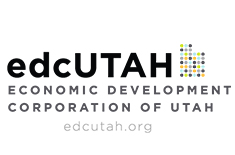The School of Computing and Utah’s Growing Tech Sector
September 1, 2016

Utah Industry Snapshot: Computer Science
Written by EDCUtah on 29 August 2016.
What does the educational environment supporting workforce development within Utah’s IT industry look like? To answer that question EDCUtah sat down for a conversation with Dr. Ross T. Whitaker, director of the University of Utah School of Computing.
EDCUtah:
Describe for us the current student body in the School of Computing. What are your demographics?
Dr. Whitaker:
Our typical student is a Utah resident who has enrolled in computer science (CS) after high school, or after serving a mission for the LDS Church. Many of the students have extensive real life experiences, so they tend to be more mature than, perhaps, students at universities in other states. What’s more, half of our students work part time while attending school, so when they graduate they will have a CS degree and a significant amount of work experience behind them.
Currently, our undergraduate female enrollment is about 11%, which is an increase for us, but still a little lower than the national average. It’s an issue we are actively working to address. We have doubled our female faculty, and we have organizations within the department to help women connect and receive mentoring. This has improved our retention of female students and their overall participation in the program. Meanwhile, the University as a whole has also made significant progress in the recruitment of students from underrepresented groups (generally), and this is reflected in our incoming freshman class.
We also enjoy virtually 100% placement of our students and our program is highly ranked. About half of our students will stay in Utah – this is a higher in-state retention relative to other states. Our under graduate program is very solid and very rigorous. It covers the fundamentals of computer science, software engineering, design and soft skills such as team work and communications.
We also have a significant Master’s program – we graduate 50-60 MS students per year. These students are from all over the nation (and the world), and they are highly sought after here along the Wasatch Front as well as in Silicon Valley.
EDCUtah:
Are there any initiatives at the university to grow enrollment in the School of Computing?
Dr. Whitaker:
There are a variety of initiatives helping us grow our enrollment. One is the legislative effort to increase the number of STEM graduates in the state, which at the university level is called the “Engineering Initiative.” We are also growing our resources by adding more CS faculty and teaching assistants in order to respond to the increase in demand. And by adding more faculty and TAs, we are able to offer more classes, larger class sizes and more electives. The bottom line is that our students have more educational choices and greater one-on-one engagement with faculty and TAs, which helps with both enrollment and retention.
Another new, exciting initiative allows direct admission into our program, so when a student applies for admission to the university, they may also apply for admission to the School of Computing and be directly admitted to our program. The minute they land at the U they are in the program, which removes any uncertainty about getting into the program later. To support these freshmen – and all of our students – we have added more online resources, access to lectures and increased hands-on time with our professors and TAs. Of course, as our enrollment grows, we will need to simultaneously grow our faculty and class sizes to meet the demand.
In some other exciting areas, the state has initiated a STEM Action Committee with the mandate to expose more kids to STEM careers. That committee is working really hard to promote computer science in K-12. Meanwhile, the State Board of Education has agreed to let the high schools accept computer science in fulfillment of a science requirement. And a computer science curriculum is being installed in schools with a program to educate teachers on how to implement the curriculum. I think all of these efforts will really increase the exposure of CS to students, especially young women. We hope this will decrease the gender disparity in our CS program.
Read the full article from Utah Pulse.